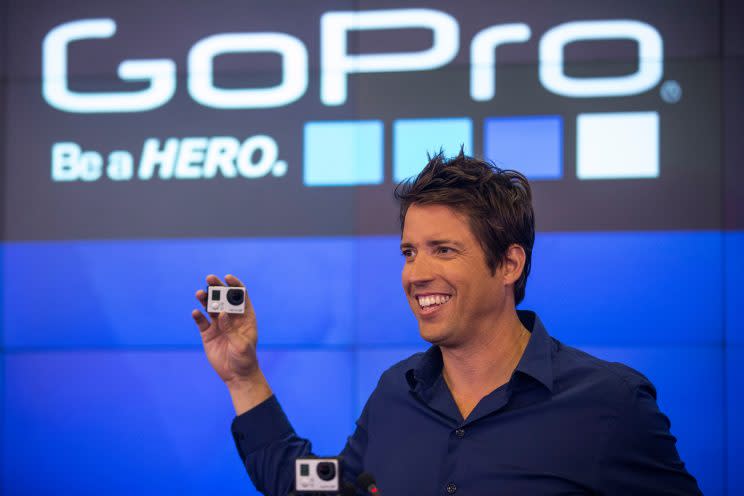GoPro got smoked in 2016 — here's how it can turn around in 2017

GoPro got absolutely smoked in 2016. Not only did the company’s stock price fall by more than half since January, but it also saw production delays on its new flagship Hero5 Black camera and Karma drone.
In Q3, the company reported its revenue had plunged by 40% and that it had to cut its full-year revenue expectations. Shortly thereafter, GoPro (GPRO) was forced to issue a recall of the Karma, as the drones were losing power mid-flight.
The result: GoPro was forced to cut 15% of its workforce — about 200 full-time jobs — and shutter its entertainment division. The price of the company’s corporate restructuring, which GoPro says will cost between $24 million and $33 million, is expected to drag down Q4 earnings.
Is this the end of GoPro as we know it? Not if it can turn things around in 2017.
Near-term success is a must
Prior to announcing its restructuring, GoPro predicted it would return to double-digit growth in 2017. But, according to Pacific Crest Securities’ Brad Erickson and Elliot Arnson, that would mean the company would see improvements in both camera and drone sales — which the duo calls “optimistic.”
IDC Research’s Christopher Chute says the next six months for GoPro will be critical to the company’s future. First, the company has to fix its past miscues. One of those mistakes — GoPro’s decision to launch an entertainment division — seems to have made sense at first, Chute explains. The division was to create original GoPro content captured on GoPro cameras.
But it appears that GoPro overestimated the public’s desire to consume GoPro-captured content, especially when much of it was already readily available on places like YouTube. According to Chute, GoPro didn’t do well in terms of articulating what its original content had to offer. As a result, GoPro scrapped the entire venture.
Still, Chute said, GoPro’s attempt to move away from its core camera hardware is the right one. The company’s execution, however, leaves something to be desired.
Double down on drones
One way GoPro could reduce its dependence on its camera business is to get deeper into the drone industry.
“They should double down on the drone space,” Chute said. “I think there is an opportunity for GoPro there, because they can extend the value that they built with optics and imagery. Maybe that’s something they are considering doing but haven’t told anyone.”
Unfortunately, GoPro’s Karma received mediocre reviews because the drone didn’t offer much in terms of smart features. It didn’t have obstacle avoidance, its battery life was short, and it was big. Most disappointing of all, it didn’t come with an auto-follow feature that allows the drone to automatically track and follow you wherever you go.
There’s also the fact that the Karma faced stiff competition from drone-maker DJI’s Mavic Pro, which had a superior drone.
Still, the Karma featured a great camera, a GoPro Hero5 Black. If GoPro can match its competitors’ drones in terms of technology and size and can hold onto its lead in terms of optics, it could be the drone company to beat in the coming years.
Entering the business market
Outside of expanding into the drone market, Chute said, GoPro should strike out into the business-to-business market in order to stabilize its long-term finances.
“Look at what Apple has done,” Chute said. “They are trying to insulate themselves from consumer moodiness by working with enterprise partners. I think GoPro needs to look at something like that to establish itself in the long term.” That, Chute explains, could include closer partnerships with Hollywood studios. After all, GoPro cameras have already been used to shoot major motion pictures like “The Martian.”
As Chute pointed out, at some point every market leader becomes a victim of its own success by paving the way for similar products by competitors. Both Apple (AAPL) and Samsung have run into similar issues in the smartphone market. “That’s where my whole argument for looking at commercial markets and looking at the drone market starts to come into play,” Chute said.
By trying to take on the drone market and working more closely with commercial partners, GoPro could fight off problems the company may face as consumers get less excited about recording their own lives.
Because, as Finance’s Ethan Wolff-Mann points out, GoPro acts under “the assumption that you can do cool things and that those things will look cool on camera.” Unfortunately, the company is now learning that for the average consumer, not even an action camera can make their everyday lives look cool.
More from Dan:
Email Daniel at [email protected]; follow him on Twitter at @DanielHowley.
